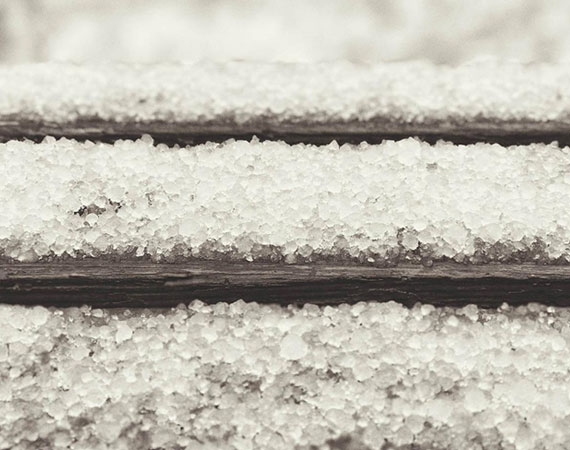Hail DAmage
The Effects of Hail Damage on Your Roof
Hail damage can happen fast in this part of the country, and it can be devastating to your roof. When a hail storm hits your area, Options Exteriors is just a call away. Why not work with a roofing company that has seen it all before, does free hail damage roof inspections, and gives free repair estimates?
Options Exteriors knows hail damage roof repair inside and out, and always guides customers through each step of the claims process.
It’s important to understand the causes of hail damage and the signs behind the different types of damage that they can cause. This guide will help you find out how to deal with hail damage.
Four Factors That Influence Hail Damage
Anyone who owns a home should know about the factors that affect a house during a hail storm. The major factors are hail, material, wind and barriers. Whenever a storm brings hail, the amount of damage is based on the density of the hailstones, the material on a roof, wind, and whether there are any protective barriers in place.
Hail:
Wind:
Material:
Barriers:
Understanding the four factors of a hail storm can help homeowners know what to expect when a storm is on the way.
If You Need Hail Damage Roof Repair
Insurance coverage for hail damage roof replacement or repair is essential. Most homeowners have insurance that covers the costs involved, but there’s still the problem of filing a claim quickly and correctly to ensure you get the compensation you deserve. Keep in mind that some insurers enforce “claim periods”. That’s why it’s so important to call us immediately after you notice hail damage, preferable right after a storm for a free inspection.

If there’s been a hail storm in your area, call the experts at Options Exteriors for a free inspection and a free estimate. We’ll make sure all insurance claims are filed accurately and on time so that homeowners can get the damage fixed without hassles or delays.
How to know if your Roof has Been Damaged by a Storm?
Discoloration on interior walls and ceilings:
Missing or damaged shingles:
Dripping anywhere in a home:
Musty, bad odor coming from walls or ceilings:
Why You Need to Address Storm-Damaged Roofing ASAP
Besides the obvious reason of keeping storm damage roof repair costs to a minimum, there are several important reasons to fix a roof as soon as any damage occurs:
